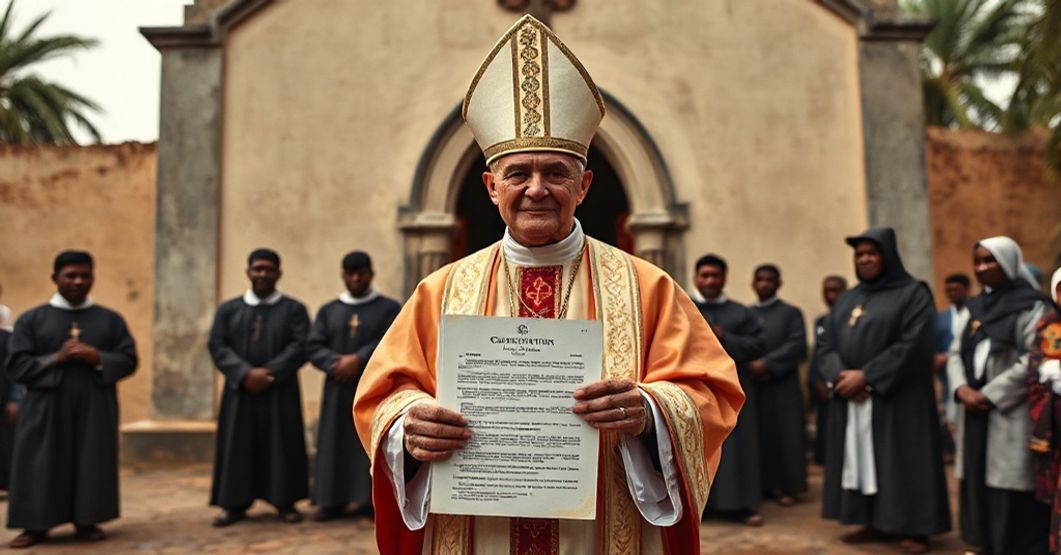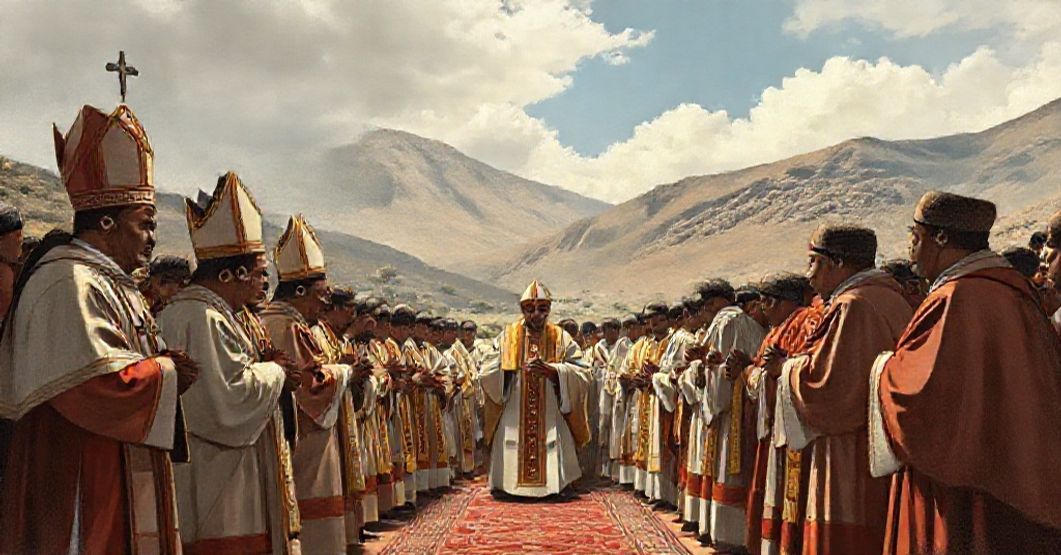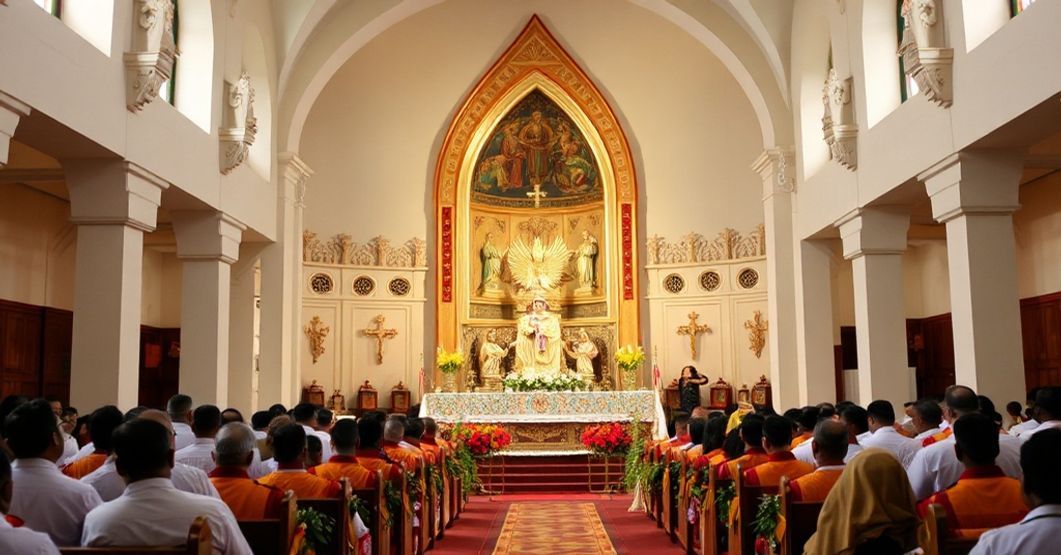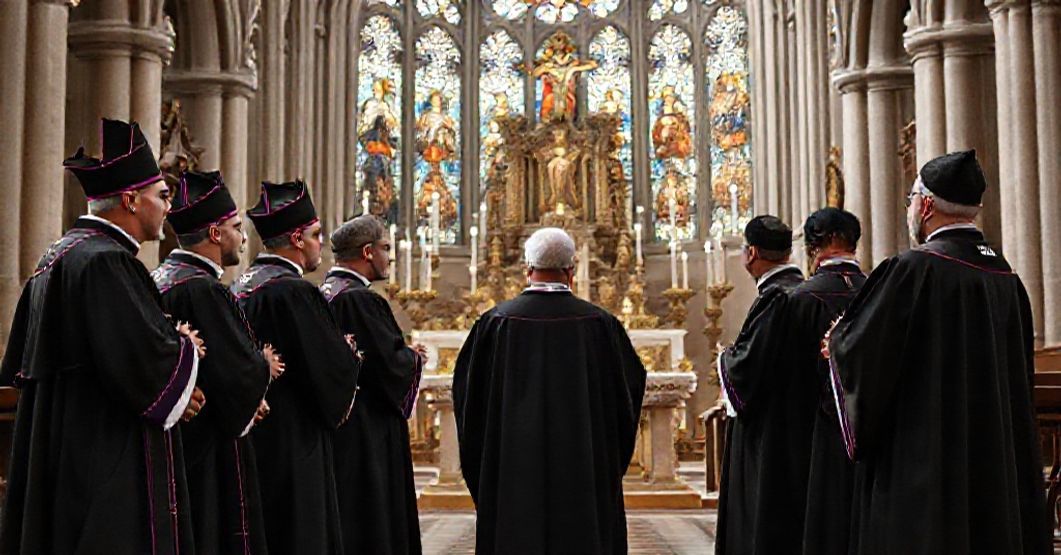Antipopes of the Antichurch



















Timeline of this heretical pontiff
Encyclical Letters
+ 15 posts1959
+ 7 posts1961
+ 4 posts1962
+ 2 posts1963
+ 2 postsApostolic Exhortations
+ 3 postsApostolic Constitutions
+ 93 posts1958
+ 6 posts1959
+ 87 postsMotu Proprio
+ 15 posts1958
+ 1 posts1959
+ 1 posts1962
+ 11 postsApostolic Letters
+ 151 posts1958
+ 4 posts1959
+ 63 posts1960
+ 78 posts1961
+ 1 posts1962
+ 4 posts1963
+ 1 postsSpeeches
+ 99 posts1958
+ 2 posts1959
+ 26 posts1960
+ 29 posts1961
+ 16 posts1962
+ 24 postsMessages
+ 6 posts1959
+ 4 postsHomilies
+ 4 postsLetters
+ 152 posts1958
+ 1 posts1959
+ 48 posts1960
+ 32 posts1961
+ 31 posts1962
+ 30 posts1963
+ 10 postsNot categorized
+ 1 posts1958
+ 1 postsNews feed


BERBERATENSI (1959.02.09)
The constitution “Berberatensi” (Bossangoaensis), dated 9 February 1959 and signed by John XXIII, decrees the territorial division of the Berberati diocese in French Equatorial Africa to erect a new apostolic prefecture of Bossangoa, entrusted to the Capuchin Friars, dependent on Bangui as metropolitan see and executed by Marcel Lefebvre and collaborators. Behind the bureaucratic elegance of canonical formulas, this act is one more brick in the construction of a counterfeit hierarchy: the usurper on the Chair of Peter reshapes missionary structures to serve the coming conciliar revolution, not the immutable Kingdom of Christ the King.


CUSCHENSIS (SICUANENSI) (1959.01.10)
Apostolic Constitution “Cuschenis (Sicuanensis)” of John XXIII briefly: by an administrative act, the occupier of the Apostolic See carves out several provinces from the historic Archdiocese of Cuzco in Peru (Canchis, Canas, Espinar, Chumbivilcas) and erects a new so‑called “prelatura nullius Sicuani,” assigns its boundaries, designates Sicuani as the see, elevates the local church of the Immaculate Virgin to a “prelatic” church, regulates clergy incardination and seminary formation, and orders the transfer of archives and temporal goods according to the 1917 Code of Canon Law—presenting all this as pastoral solicitude for souls and better governance of the “universal Church.”


Changancherrensis et aliarum (1959.01.10)
The referenced constitution of John XXIII, “Changancherrensis et aliarum,” elevates the Syro-Malabar Changanacherry diocese to an archdiocese and erects a new ecclesiastical province (Changanacherry with Palai and Kottayam as suffragans), cloaking the act in pious biblical imagery about the mustard seed and the universal spread of the Church, and decorating it with the usual juridical formulae, privileges of the pallium, and self-asserted irreformability. It is a deceptively brief text in which the future architect of the conciliar revolution seeks to dress a structural mutation of the Eastern Catholic hierarchy in the external continuity of pre-conciliar canonical language, while in reality preparing one more brick in the construction of the conciliar sect’s autonomous, national, quasi-autocephalous system opposed to the one, visible, Roman-centered Church of Christ.


Chihuahuensis (1959.01.08)
The document “Chihuahuensis” of John XXIII, issued as an apostolic constitution on 8 January 1959, juridically erects a collegiate chapter of canons in the metropolitan cathedral of Chihuahua: it specifies the number of canons and prebendaries, their dignities (Archdeacon, Theologian, Penitentiary, Administrator), regulates choir dress and external habit, links the new chapter to certain solemn liturgical functions, outlines competencies regarding benefices, and declares that diocesan consultors’ office ceases ipso facto once the chapter is erected.
Varia
Announcement:
– News feed –implemented
– Antipopes separate web sites with their all documents refutation – in progress
